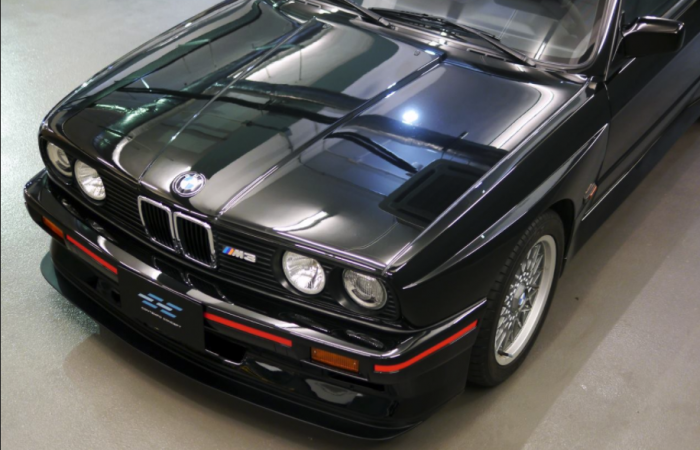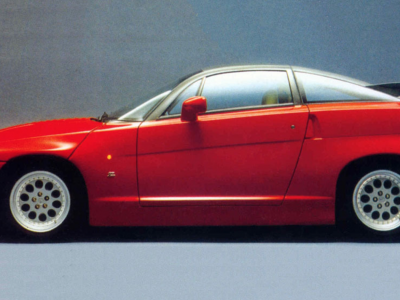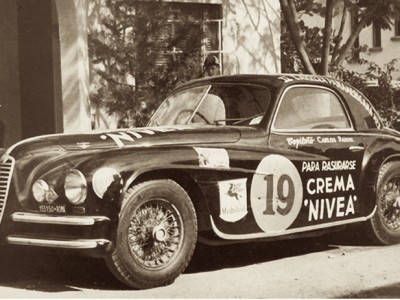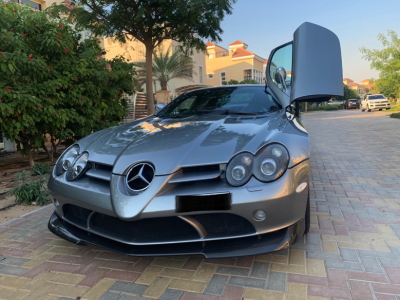Details
- SOLD
- Body Type: Coupe
- Dealer Location: Madrid
- Trans: Manual
- Fuel Type: Gas
Based on the 1986 model year E30 3-Series, the E30 M3 used the BMW S14 engine.
In contrast to later M3 iterations, the E30 M3 was campaigned by BMW as well as other racing teams including Prodrive and AC Schnitzer in many forms of motorsport, including rallying and road racing. The latter included campaigns in the World Touring Car Championship, Deutsche Tourenwagen Meisterschaft, British Touring Car Championship, Italian Touring Car Championship, French Touring Car Championship and the Australian Touring Car Championship. The production of the E30 road car was to homologate the M3 for Group A Touring Car racing. It was to compete with various models including the “2.3-16V” variant of the Mercedes-Benz W201 190E that was introduced in 1983.
In full race trim, the naturally aspirated 2.3 L S14 engine produced approximately 300 hp (224 kW; 304 PS). With the introduction of the 2.5 L evolution engine into racing in 1990, power increased to approximately 380 hp (283 kW; 385 PS).
The E30 M3 road car[edit]
The first iteration of the road car engine produced 195 PS (143 kW) with a catalytic converter and 215 PS (158 kW) with a catalytic converter for the later version.
The “Evolution” model (also called “EVO2″) produced up to 220 PS (160 kW). Other Evolution model changes included larger wheels (16 X 7.5 inches), thinner rear and side window glass, a lighter bootlid, a deeper front splitter and additional rear spoiler. It was only available in coupe and convertible bodies; no saloon option was available.
Later the “Sport Evolution” model production run of 600 (sometimes referred as “EVO3″) increased engine displacement to 2.5 L and produced 238 PS (175 kW). Sport Evolution models have enlarged front bumper openings and an adjustable multi-position front splitter and rear wing. Brake cooling ducts were installed in place of front foglights. An additional 786 convertibles were also produced.
M3 Pickup (1986)
It is a concept vehicle built from a 3 Series Convertible, with narrower body than the mass-produced counterpart, engine from the 2-litre ‘Italian M3′ (192PS) engine (later changed to 2.3-litre four-cylinder (200PS) engine).
It was used a transporter for roughly 26 years before it was officially retired in 2012.
Body
The E30 M3 differed from the rest of the E30 line-up in many ways. The M3, although using the same basic unit-body shell as the standard E30, was equipped with 12 different and unique body panels for the purposes of improving aerodynamics, as well as “box flared” wheel-arches in the front and rear to accommodate a wider track with wider and taller wheels and tyres. The only exterior body panels the standard model 3-series and the M3 shared were the bonnet, roof panel, sunroof, and door panels.
Suspension
The E30 M3 differed from the standard E30 by having a 5×120 wheel bolt pattern. The E30 M3 had increased caster angle through major front suspension changes. The M3 had specific solid rubber offset control arm bushings. It used aluminium control arms and the front strut tubes were changed to a design similar (bolt on kingpins and swaybar mounted to strut tube) to the E28 5-series. This included carrying over the 5 series front wheel bearings and brake caliper bolt spacing. The rear suspension was a carry over from the E30.
Brakes
The E30 M3 had special front and rear brake calipers and rotors. It also has a special brake master cylinder.
Driveline
The E30 M3 had one of two Getrag 265 5-speed gearboxes. US models received an overdrive transmission while European models were outfitted with a dogleg version, with first gear being down and to the left, and fifth gear being a direct 1:1 ratio. Rear differentials installed included a 4.10:1 final-drive ratio for US models. European versions were equipped with a 3.15:1 final drive ratio. All versions were clutch-type limited-slip differentials with 25% lockup.
Wrap up
Sport Evolution M3 version
To keep the car competitive in racing following year-to-year homologation rules changes, homologation specials were produced. Homologation (motorsport) rules roughly state that the race version must reflect the street car aerodynamically and in engine displacement. These include the Evo 1, Evo 2, and Sport Evolution, some of which featured less weight, improved aerodynamics, taller front wheel arches (Sport Evolution; to further facilitate 18-inch (460 mm) wheels in DTM), brake ducting, and more power. Other limited-production models (based on evolution models but featuring special paintwork and/or unique interior schemes commemorating championship wins) include the Europa, Ravaglia, Cecotto, and Europameister.
Production of the original E30 M3 ended in early 1992.
The M3s were entered by BMW as well as private racing teams and its wins included the Deutsche Tourenwagen Meisterschaft, British Touring Car Championship European Touring Car Championship, Australian Touring Car Championship, as well as the World Touring Car Championship drivers’ title in 1987. The E30 M3 is also a multiple winner of Guia Race, 24 Hours Nürburgring and Spa 24 Hours.
The M3 also saw service as a rally car, with Prodrive-prepared examples contesting several national championships and selected rounds of the World Rally Championship between 1987 and 1989. By the latter year, the cars, based on the standard M3, were equipped with six-speed gearboxes and produced 295 bhp. The M3 was not very competitive with the four-wheel-drive cars on loose surfaces, but a very effective car on asphalt. Its most notable success was victory on the Tour de Corse in 1987, driven by Bernard Beguin.




